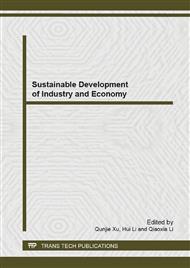p.1075
p.1080
p.1085
p.1091
p.1096
p.1106
p.1112
p.1117
p.1121
Analysis of Determinants on Chinas Interprovincial Migration during 1985-2005
Abstract:
This paper tries to identify the characters which might affect interprovincial migrants decisions and examine how and why the influence of these characters changes over time individually and synthetically in China during 1985-2005. We have investigated six kinds of factors, including distance, population density, income, unemployment rate, house price, and migration stock. In addition, we apply the identified factors with a multiple stepwise regression model to a longitudinal dataset, which consists of the interprovincial migration flows over last two decades in China. It is found that different factors have disparate impacts on migration in China, and they can be decomposed into push force in origin area and pull force in destination area. Factors shaping Chinas interprovincial migration have shifted from traditional factors such as distance to economic factors such as income and unemployment rate. This paper suggests that more attention should be paid to obtain detailed migration data with spatial information and develop applicable models for migration processes. Our analysis provides references for development planners and policy-makers to develop sound population policies to achieve regional sustainable development in China.
Info:
Periodical:
Pages:
1096-1105
Citation:
Online since:
December 2013
Price:
Сopyright:
© 2014 Trans Tech Publications Ltd. All Rights Reserved
Share:
Citation:


